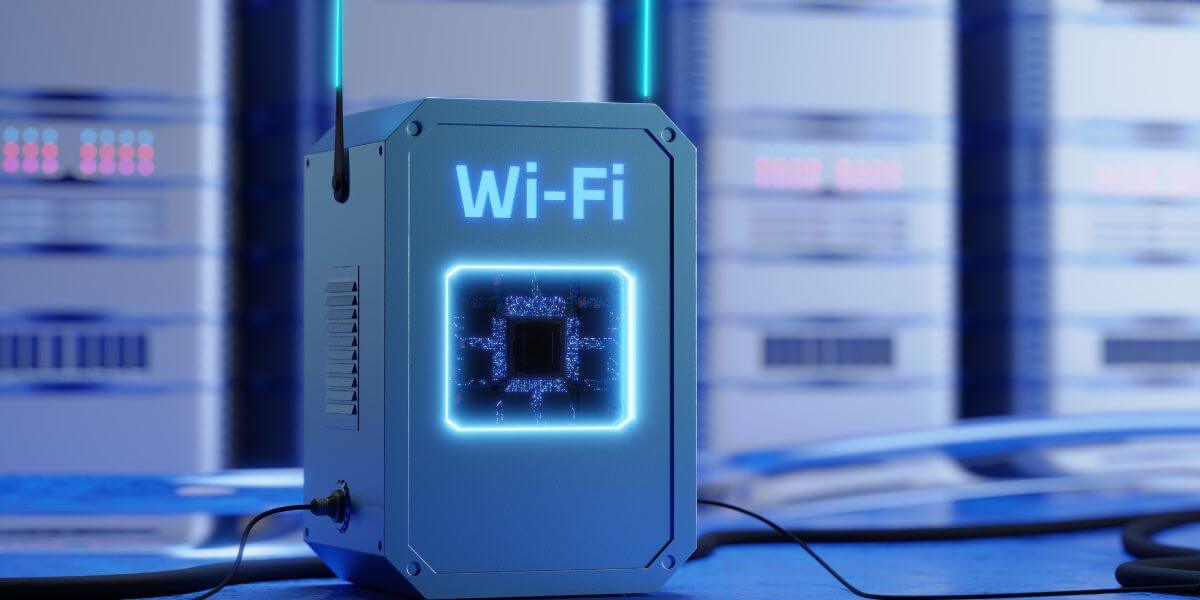Lower your internet bill
61% of people overpay for their internet.
Are you one of them?
Unlock exclusive offers in your area!
Call now
[tel]Enter zip code
1 Star is Poor & 5 Stars is Excellent.
* Required
Written by Sam Watanuki - Pub. Mar 31, 2025 / Updated Mar 31, 2025
Are you happy with your Internet service?
About the author
Wireless technology is evolving fast, bringing us faster speeds, lower latency, and better connectivity for our ever-connected homes. With internet providers now offering multi-gigabit speeds, it’s important to have a router that can keep up.
Two of the latest WiFi standards—WiFi 6E and WiFi 7—offer major upgrades over older generations, but knowing the differences between them is key to choosing the right option for your home network.
WiFi 6E is an extension of the WiFi 6 (802.11ax) standard that was released in 2019. The “E" stands for “extended," reflecting its most significant feature: access to the newly unlocked 6 GHz frequency band. This addition was an evolution, as it marked the first major spectrum expansion for WiFi in over two decades.
The 6 GHz band was a game-changer because it offered significantly more bandwidth and less interference than the crowded 2.4 GHz and 5 GHz bands. This translates to faster and more reliable connections, especially in dense urban environments or apartment buildings where neighboring networks can cause interference.
WiFi 7 (802.11be) represents the next major leap in wireless technology. Currently being implemented in the latest routers, WiFi 7 builds upon WiFi 6E’s foundation while introducing several groundbreaking improvements to speed, reliability, and efficiency [1].

What Wi-Fi 7 brings
WiFi 6E and WiFi 7 bring big improvements to wireless technology, each with unique features and upgrades. In this section, we’ll break down the key differences between the two, covering their speed, efficiency, and new capabilities.
The most noticeable difference between WiFi 6E and WiFi 7 is speed. WiFi 7 offers theoretical maximum internet speeds of up to 46 Gbps compared to WiFi 6E’s 9.6 Gbps—nearly five times faster. This dramatic increase is achieved through two main improvements:
For the average user, this translates to speeds of up to 5 Gbps on mobile devices that support WiFi 7, making it capable of handling future internet speeds of up to 10 Gbps as they become available from service providers.
Perhaps the most revolutionary feature of WiFi 7 is Multi-Link Operation [2]. With previous WiFi standards including WiFi 6E, your devices could only connect to one frequency band at a time. For example, your smartphone might connect to either the 5 GHz or 6 GHz band, but not both simultaneously.
WiFi 7 changes this fundamental limitation by allowing devices to:
This is particularly beneficial for:
WiFi 7 introduces a technique called “puncturing" that makes wireless connections more resistant to interference [3]. In previous standards, if a portion of a channel experienced interference, the entire channel would be affected.
With WiFi 7’s puncturing technology, if interference is detected on part of a channel, the system can simply block that specific portion while continuing to use the rest of the channel. Think of it like driving around a pothole rather than closing the entire lane of a highway.
WiFi 7 significantly reduces latency compared to WiFi 6E, making it ideal for:
These latency improvements stem from both the MLO capability and more efficient data handling protocols built into the standard.

What works with Wi-Fi 7?
As with any new wireless standard, compatibility is an important consideration:
It’s worth noting that all WiFi standards are backward compatible, meaning:
Deciding when to upgrade your WiFi gear can feel like a big choice, especially with how fast wireless technology is evolving. The right time to upgrade really comes down to your current needs, whether your devices are compatible, and what advantages the latest standards can offer.
WiFi 6E routers have been on the market longer and prices have begun to stabilize, making them more accessible for most consumers. Entry-level WiFi 6E routers start around $200, with mesh systems beginning around $400-500.
WiFi 7 routers and mesh systems entered the market in 2023-2024 with premium pricing. As of early 2025:
Prices for WiFi 7 equipment are expected to decrease as adoption increases and more manufacturers enter the market.

Does Wi-Fi 7 make sense for you?
Both WiFi 6E and WiFi 7 represent significant advancements in wireless networking technology. WiFi 6E provides access to the less congested 6 GHz band and offers excellent performance for most current household needs. WiFi 7 builds upon this foundation with dramatic speed improvements, multi-link operation, and better handling of interference.
Your decision should ultimately depend on your specific needs, the devices you own, your budget, and how future-proof you want your network to be. For many households, WiFi 6E provides an excellent balance of performance and value, while tech enthusiasts and those with demanding networking needs may benefit from investing in WiFi 7.
As with any technology purchase, consider both your current requirements and what you might need in the next 2-3 years before making your decision.
[1] TP-Link. “What is WiFi 7?"
[2] Asus. “[Wi-Fi 7 Wireless Router] What is MLO (Multi-Link Operation) and how it works?"
[3] Netgear. “Is Your Neighbor’s WiFi Slowing You Down? Fix it with WiFi 7 Preamble Puncturing!“
About the author
Congratulations, you qualify for deals on internet plans.
Speak with our specialists to access all local discounts and limited time offers in your area.
[tel]61% of people overpay for their internet.
Are you one of them?
Unlock exclusive offers in your area!
Call now
[tel]Enter zip code